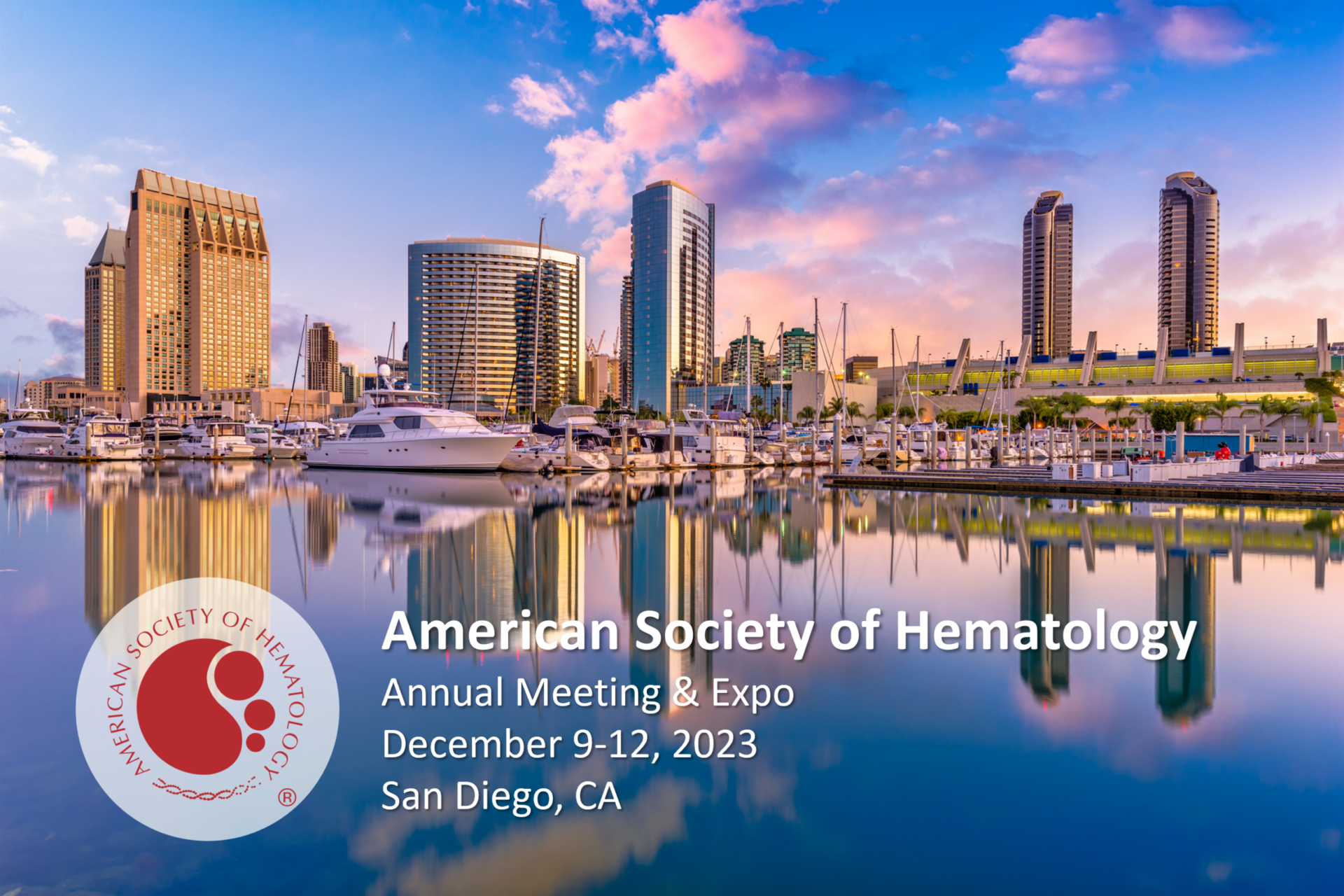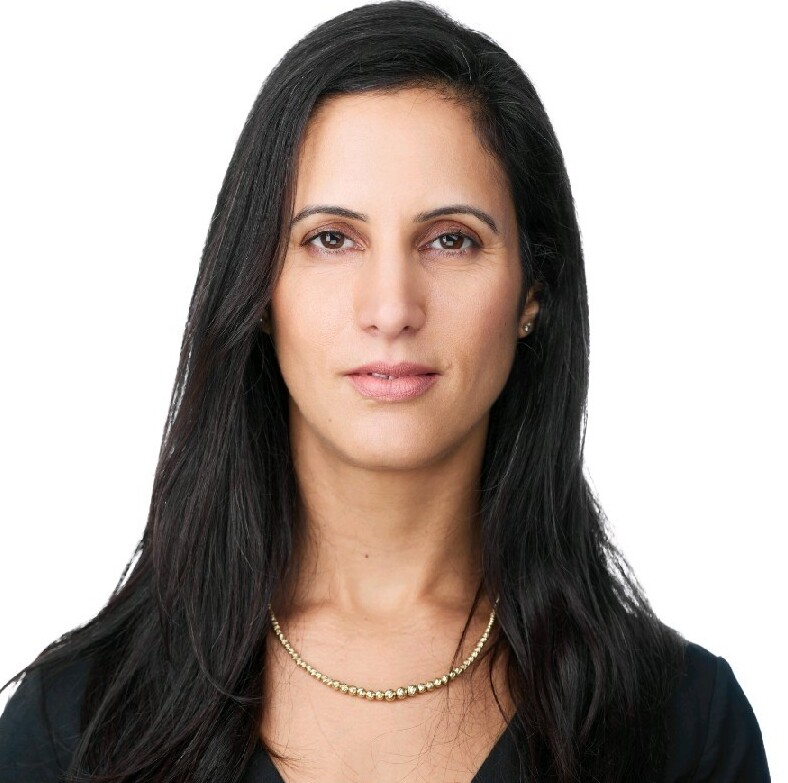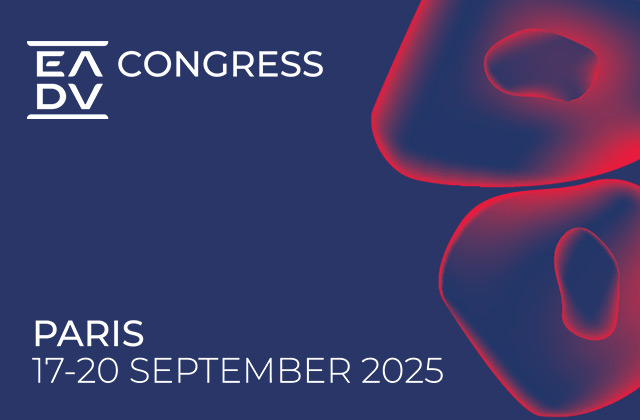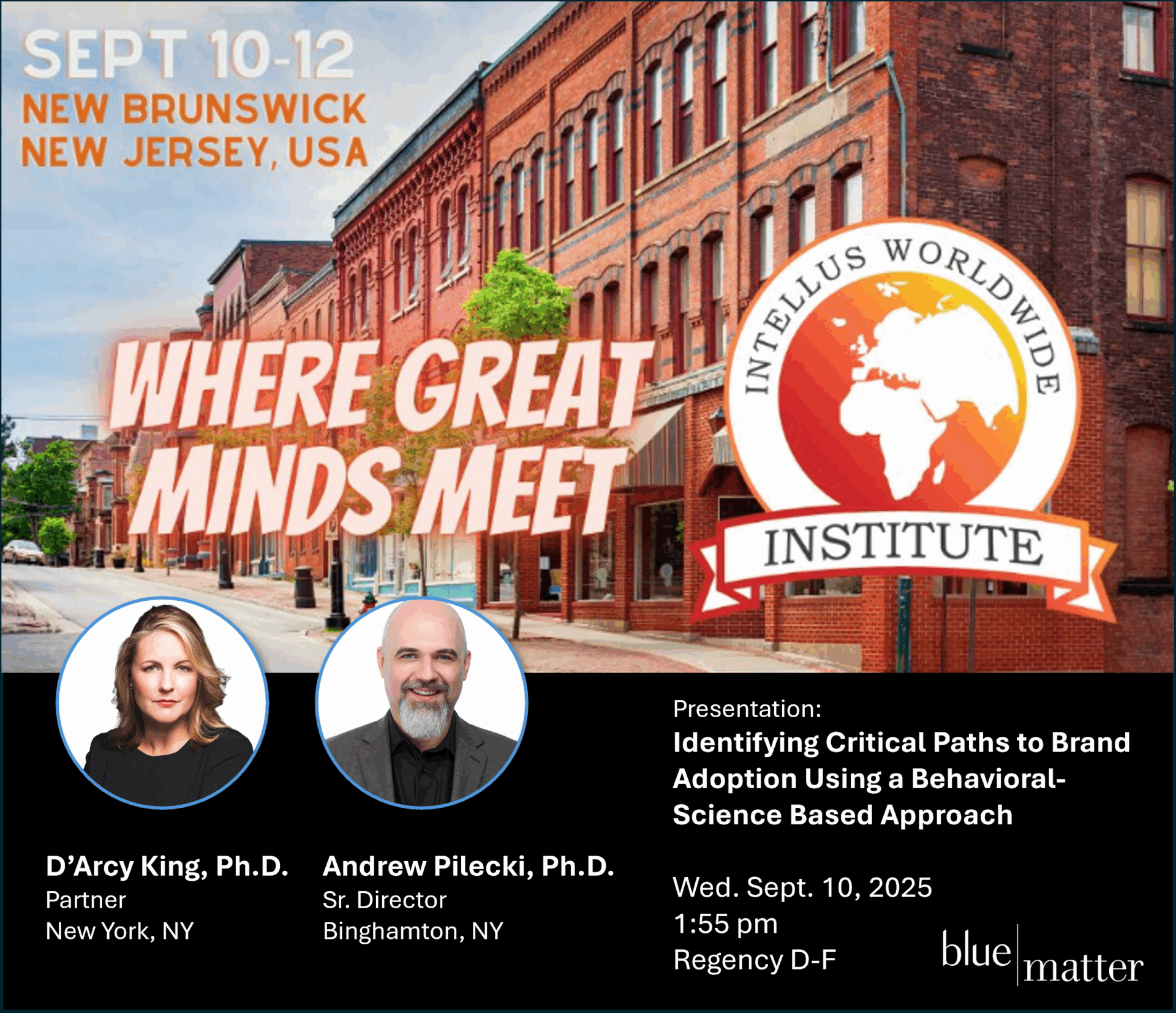
Last week, the American Society of Hematology (ASH) hosted its annual meeting in San Diego, CA. Our team attended the meeting and had the opportunity to reconnect with colleagues while also seeing presentations and data regarding the latest innovations in hematology. ASH is a large meeting, and to help sort through all the data and presentations shared, we summarized the data into key themes brought to you in a relatively brief and accessible format.
Acute Myeloid Leukemia (AML): Menin inhibitors – more biomarkers, more oral therapy, more fragmentation
Menin is a tumor suppressor that is implicated in leukemogenesis. Leukemia cells with KMT2A rearrangements and NPM1 mutations are highly susceptible to menin inhibition. These inhibitors add to a number of targeted therapies that were approved for the treatment of leukemia over the past 6 years that include FLT3, IDH, hedgehog, and BCL2 inhibitors.
Two menin inhibitors were showcased at ASH: Syndax’s revumenib and Johnson & Johnson’s JNJ-75276617. The J&J asset (monotherapy) in a phase 1 study of 33 patients with KMT2Ar and NPM1m showed similar activity across KMT2Ar and NPM1m patients. The median duration of response (mDoR) was 6.5 months. The table below provides a summary.
In a late-breaking session, Syndax presented the AUGMENT-101 pivotal Phase 2 study showcasing revumenib monotherapy activity in relapsed / refractory (R/R) leukemia patients across all ages with KMT2Ar. Minimal residual disease-negative status (MRDneg) was achieved in all patients. Revumenib was also studied in combination with an oral hypomethylating agent (HMA) and venetoclax. Summary data are also provided in the table below.
| Drug >>> | JNJ-75276617 | Ziftomenib | ||
|---|---|---|---|---|
| Company | J&J | Kura Oncology | ||
| Target Patients | R/R AML w/ KMT2Ar | R/R AML w/ KMT2Ar, NPM1m and NUP1r | KMT2Ar and NPM1m | NPM1m |
| n | 57 | 9 | 33 | 20 |
| Regimen | Monotherapy | Combination with Oral HMA and Venetoclax | Monotherapy | |
| ORR (%) | 63 | 100 | 53 | 45 |
| CR / CRh | 23 | 77 | 27 | 40 |
QTc prolongation and differentiation syndrome emerge as a safety signal in these patients. Cardiovascular safety signals were also an initial concern with ibrutinib. However, those concerns lessened as hem/oncs quickly appreciated the overwhelming efficacy of the therapy.
Nevertheless, the commercial opportunity for Menin inhibitors is in question: Are there enough patients to potentially sustain 3 menin inhibitors in the market? There are about 20,000 AML patients diagnosed in a given year. NPM1m is present in 30% of those patients and KMT2Ar is present in about 5-10% of AML patients. So, there is some opportunity in around 8,000 patients per year.
The magnitude of the opportunity will depend a few variables:
- Duration of response. If it lasts years, such as in the case of Gleevec®, there is a blockbuster opportunity.
- Applicability across tumors. Applying menin inhibitors to tumors other than leukemias can also increase the opportunity.
- Place in the treatment paradigm. Patients who have NPM1m or KMT2Ar, may also harbor IDH or FLT3 mutations. Physicians will need to determine which targeted therapy to use first. As such, those drugs may face in-class as well as out-of-class competition.
Non-Hodgkins Lymphoma (NHL): Continuing advancement of CD20 bispecifics
One of the key themes from NHL was the continued march of CD20 bispecific antibodies, and particularly promising early data for CD20 bispecific combinations.
Monotherapy
Updated results for Regeneron’s odronextamab from the ELM-2 study in diffuse large B cell lymphoma (DLBCL) were shared at ASH. The PDUFA date is in March 2024 and could lead to approval of the third CD20 bispecific for NHL.
AbbVie and Genmab presented data from the Phase 1/2 EPCORE NHL-1 study in follicular lymphoma (FL). It showed that 3L+ patients treated with epcoritamab experienced an 82% average overall response rate (ORR) including a 63% complete response (CR) rate.
Combinations
Researchers shared data from a range of studies involving combination therapies. Below, we offer a quick summary in this space:
- A phase 1b study of glofitamab (Glofit) + R-CHOP and Glofit + Pola-R-ChP showed high response rates. Glofit + Pola-R-CHP showed a 100% ORR and 91.7% complete metabolic response (CMR) rate, as well as increased ctDNA clearance (with a manageable safety profile). Based on these data a Glofit + Pola-R-CHP phase 3 study has been initiated.
- Study showed durable responses in Glofit + R-CHOP in high-risk (by ctDNA) 1L DLBCL patients. Of 144 patients screened, 29 were high risk (27% DHL/THL – no Gr5 AEs, no Gr3+ CRS). ORR was 95% at end of trial.
- Results from the EPCORE NHL-5 study evaluating epcoritamiab + lenalidomide in RR LBCL showed strong activity (ORR/CR 72%/53%) with a manageable tolerability profile (11% G3/4 CRS)
- Finally, a phase 1/2 trial of mosunetuzumab + Polivy (polatuzumab vedotin) showed a strong response rate of 59.2% in patients with R/R LBCL who were elderly, unfit or frail.
Sequencing with CAR-T
With the wide availability of CAR-Ts and BsAb, the HemOnc community debates the best way to use these agents in the treatment paradigm. That topic continues to remain unsettled.
ASH delivered some notable data showing activity for bispecifics when sequenced after CAR-T therapy. The phase 2 BICAR study assessed the safety and efficacy of a bispecific (glofitamab) after CAR-T therapy, showing improved overall survival (OS) when compared to historical controls.
Also, a retrospective international study included R/R LBCL patients treated with CD19-targeted CAR-T cells (who had been exposed to bispecific antibodies prior to apheresis) at 15 centers between July 2018 and January 2023. The study showed that previous exposure to bispecific antibody (BsAb) treatment targeting different antigens does not have a negative impact on survival outcomes after CAR T-cell therapy. A lack of response to a previous BsAb does not predict lower response rates after CAR T-cell infusion.
Multiple Myeloma – More CD38-based combinations to treat newly diagnosed multiple myeloma (NDMM) patients and BCMA-agents for high-risk smoldering multiple myeloma (HR-SMM)
Newly diagnosed MM
At ASH, there were data readouts for earlier lines of treatment in NDMM patients. The IsKia and PERSEUS studies further support the utilization of CD38 agents as the frontline treatment for MM patients. These studies presented an improvement in outcomes compared to VRd (Velcade, Revlimid, and dexamethasone, the standard of care in this line of treatment) and D-VTd, an approved dara-based regimen that’s mostly used ex-US.
However, a couple of questions or issues emerge from these data:
- These studies relied on MRDneg status determined by next-generation sequencing (NGS) to inform continuation of maintenance treatment. This testing is considered costly and may not be available to all patients and across institutions, creating a challenge in optimizing treatment for all patients.
- Isatuximab’s place in the market is yet to be determined. Sanofi’s D38-mAb is late to market and the IsKia study only provided MRDneg without progression free survival (PFS) data, which is the minimal endpoint most physicians may require to guide treatment at this stage of disease. On the other hand, isatuximab has demonstrated the longest PFS in R/R patients (IKEMA study), boding well that a similar benefit can be observed in newly diagnosed patients. In addition, the IsKia study demonstrated MRD benefit across all patients including those that are high-risk (HR)—where PERSEUS only showed modest benefit—potentially positioning it as a suitable agent in HR patients, if approved.
| Study >>> | ||||||
|---|---|---|---|---|---|---|
| Target Patients | ||||||
| Regimen | D-VRd | VRd | Isa-KRd | KRd | D-VTd | VTd |
| n | 351 | 347 | 151 | 151 | 543 | 542 |
| CR | 87.9% | 70.1% | 39% | 26% | ||
| MRDneg | 75.2% (65.1% sustained) | 47.5% (32.2% sustained) | 67% | 48% | ||
| PFS | 84.3% @ 48 mos. | 67.7% @ 48 mos. | ||||
| Notes | Seems like older HR patients derived only modest benefit | |||||
BCMA – Moving into front-line treatment of HR-SMM?
Treatment of HR-SMM remains a debate in the hematology / oncology community. On the one hand, 50% of HR SMM patients may progress to multiple myeloma. On the other hand, the risk-benefit profile of current regimens may not justify treatment.
Past studies with KRd (carfilzomib lenalidomide dexamethasone) followed by autologous stem cell transplants (ASCT) yielded only 63% MRDneg status at the 3-month mark, with the risk of toxicities associated with ASCT and KRd.
The ongoing Phase 3 ITHACA study is testing isatuximab, lenalidomide, and dexamethasone in these patients. There is an appetite to identify therapies with an improved safety and efficacy profile.
Teclistamab, a BCMAxCD3 targeting T-cell engager is approved in R/R multiple myeloma (RRMM) and induced deep responses. A small study tested its potential feasibility in HR-SMM, given that a lower tumor volume may yield less cytokine release syndrome (CRS) and that an immune system that is less impacted by prior treatments may yield better efficacy outcomes, at a lower risk of infections. The study tested teclistamab in 12 patients, yielding MRDneg status of 100% at 10^(-6) with an acceptable safety profile. Time and further study will tell whether teclistamab is the safer, more effective HR-SMM treatment that hem/oncs are seeking.
Non-malignant hematology (sickle cell disease): Gene therapy and curative approaches steal the spotlight, but will it live up to the hype?
ASH started out with a bang, with two back-to-back gene therapy FDA approvals for sickle cell disease (SCD) on the first day – one for lovo-cel from bluebirdbio and the other for exa-cel from Vertex and CRISPR Therapeutics. The exa-cel approval is an especially notable landmark as the first FDA-approved CRISPR-based therapy. These approvals are a result of ongoing research and innovation in a previously neglected disease. This year’s ASH conference continued to build on the momentum within SCD, with two major sub-themes. Below, we briefly explore them.
One: More patients than ever will be eligible for curative SCD therapies
The traditional curative approach in SCD has been stem cell transplant in a matched sibling donor (MSD), for which typically only 8-14% of SCD patients are eligible. Combined with the need for myeloablative conditioning (resulting in infertility), and poorer outcomes in adults has led to low use in the SCD population.
Data presented at this year’s ASH may greatly expand the eligible patient pool for curative therapies, though time will tell how quickly (and widely) these approaches will be adopted.
Gene therapies were the headliners of ASH. As a form of autologous stem cell transplant, gene therapy has the potential to greatly expand the pool of eligible patients. Data from both gene therapies were impressive. 88.2% of lovo-cel patients achieved complete resolution of all vaso-occlusive events while 96.7% of exa-cell patients were free of severe vaso-occlusive events for at least 12 consecutive months.
Dampening the excitement, however, were the controversial price tags, with exa-cel at about $2.2 million and lovo-cel at $3.1M. This caused quite a stir amongst ASH moderators and participants who speculated about the affordability of these therapies.
Adding further headwinds to the adoption of gene therapy was the presentation of results from BMT CTN Protocol 1507. This approach utilizes a non-myeloablative conditioning regimen from an HLA-matched first degree relative (~90% of SCD patients eligible), addressing two of the major pain points from prior MSD-based stem cell transplant approaches. Data show an 88% 2-year event-free survival (EFS) rate. An abbreviated table of data presented at ASH are shown below.
| Variable | BMT CTN1507 | Lovo-cel | Exa-cel |
|---|---|---|---|
| Conditioning | Non-Myeloablative | Myeloablative | Myeloablative |
| Mean Hemoglobin g/dL post-transplant | 13.5 | >=11 | >=12 |
| EFS | 88% | 85% (HbAAT87Q) | 96.7% |
| Cost in USD | $200K - $400K | $3.1 million | $2.2 million |
Two: Continued innovation in disease-modifying therapies and targets may challenge curative approaches
Small molecule treatments for SCD continue to be an area of significant development activity given the difficulty of scaling up curative approaches, especially in lower income geographies. Interesting phase 2 study results for two pipeline oral disease modifying therapies were presented:
| Study | Therapy | Relevant Results |
|---|---|---|
| RISE-UP | Mitapivat Pyruvate kinase (PK) activator |
|
| GBT021601-021 | GBT601 Next-generation sickle hemoglobin (HbS) polymerization inhibitor |
|
Additionally, a number of new therapeutic targets were presented at ASH:
- WIZ: Novartis presented data on WIZ, a transcription factor that inhibits fetal hemoglobin (HbF) production. Specifically, they presented data on a targeted protein degradation approach utilizing the endogenous cereblon (CRBN) protein degradation complex target WIZ and induct HbF expression
- BCL11A: BCL11A is another transcription factor that inhibits HbF production (and targeted by exa-cel). The crystal structure of BCL11A was presented at ASH, where it was revealed to be a tetramer with a stable core that can potentially be targeted by small molecules.
Overall Implications in SCD
The SCD field is an exciting and quickly evolving therapeutic area. Here are a few predictions:
- Curative approaches will gain steady uptake, but initial uptake will likely be hampered by patient access and infrastructure constraints
- Disease modifying therapies and/or combinations will likely remain the practical option for most patients, with new approaches / molecules challenging the risk/benefit profile of curative approaches
- Increasing industry investment in SCD treatment infrastructure and patient services, driven by the proliferation of new therapeutics, will hopefully begin to address some of the significant social and logistical hurdles that often stand in the way of delivering optimal, holistic SCD care.
Coming Next
For readers who were unable to attend ASH, we hope this summary provides some valuable insights. Again, ASH is a large meeting, so it’s impossible to cover every interesting piece of data that was shared there. However, this article is not the last piece of thought leadership that will have its origins in the 2023 ASH meeting. While there, we had the opportunity to discuss some interesting topics with clinicians and opinion leaders in the hematology space. In the new year, we’ll be back with another article providing more detail. Until then, enjoy the Holiday break and we’ll see you in the New Year!








